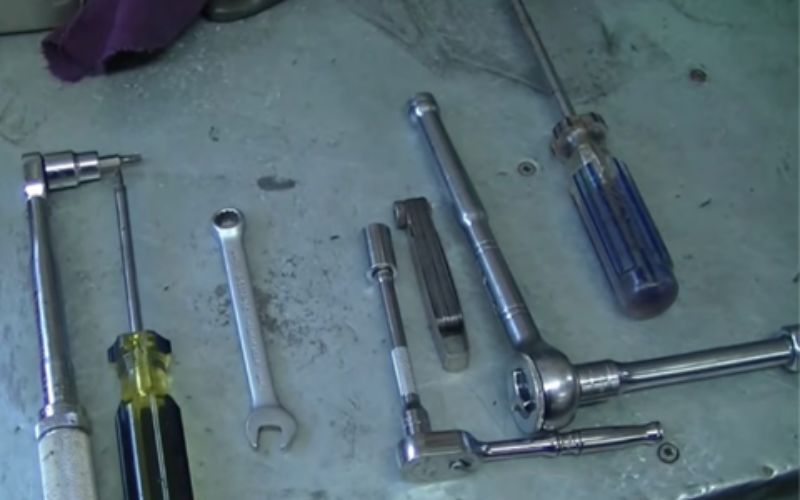Composting Tips for New Hampshire Gardeners: Effective Strategies for Healthy Soil
Gardening in New Hampshire isn’t always straightforward, especially when you’re staring down a pile of organic waste. Composting can seriously enrich your soil and cut down on waste, but you’ll want to adjust your approach for the local climate and wild seasonal shifts.
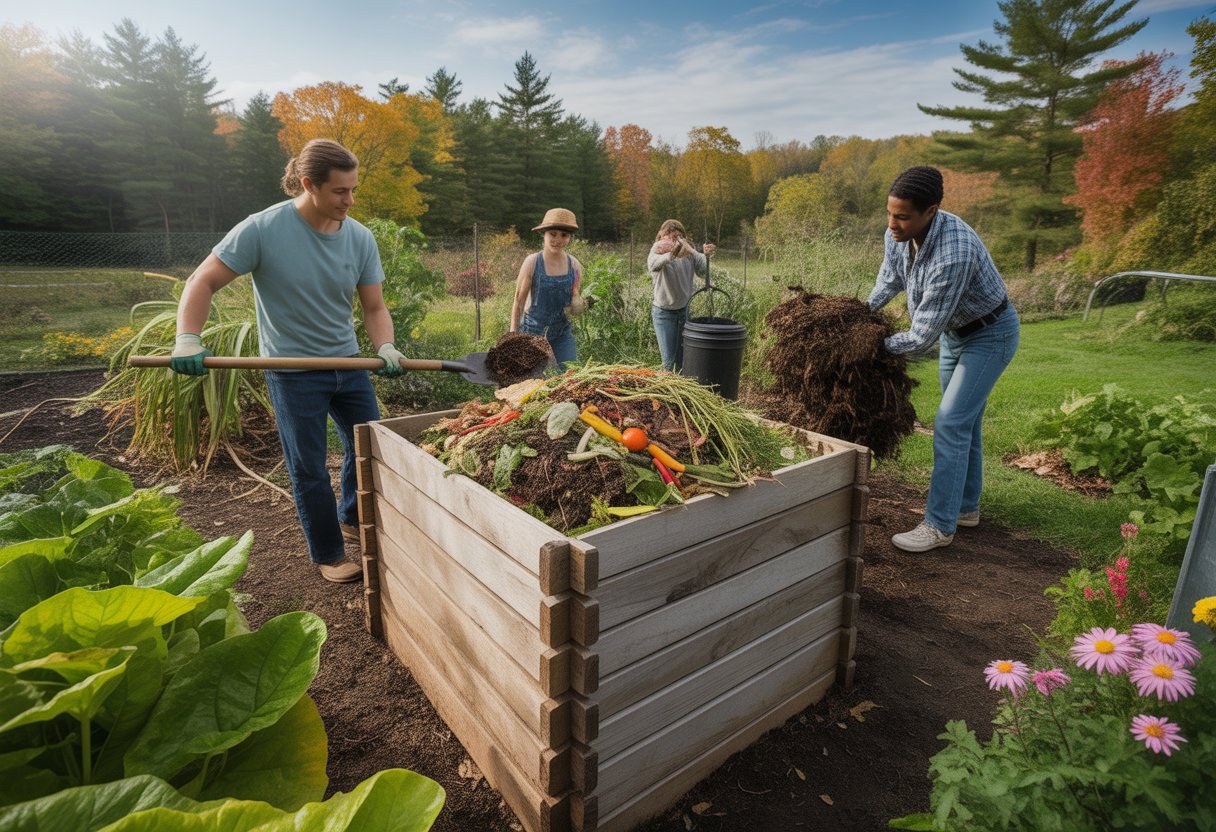
The best composting tips for New Hampshire? Balance your green and brown materials, keep things moist even in those bone-chilling winters, and turn the pile often enough to keep it all breaking down. These habits give you nutrient-rich compost that’ll boost your plants all year.
Knowing your local environment helps you get more out of composting. Here’s a breakdown of steps that fit the New Hampshire gardening cycle and weather—practical stuff, not just theory.
Composting Basics for New Hampshire Gardeners
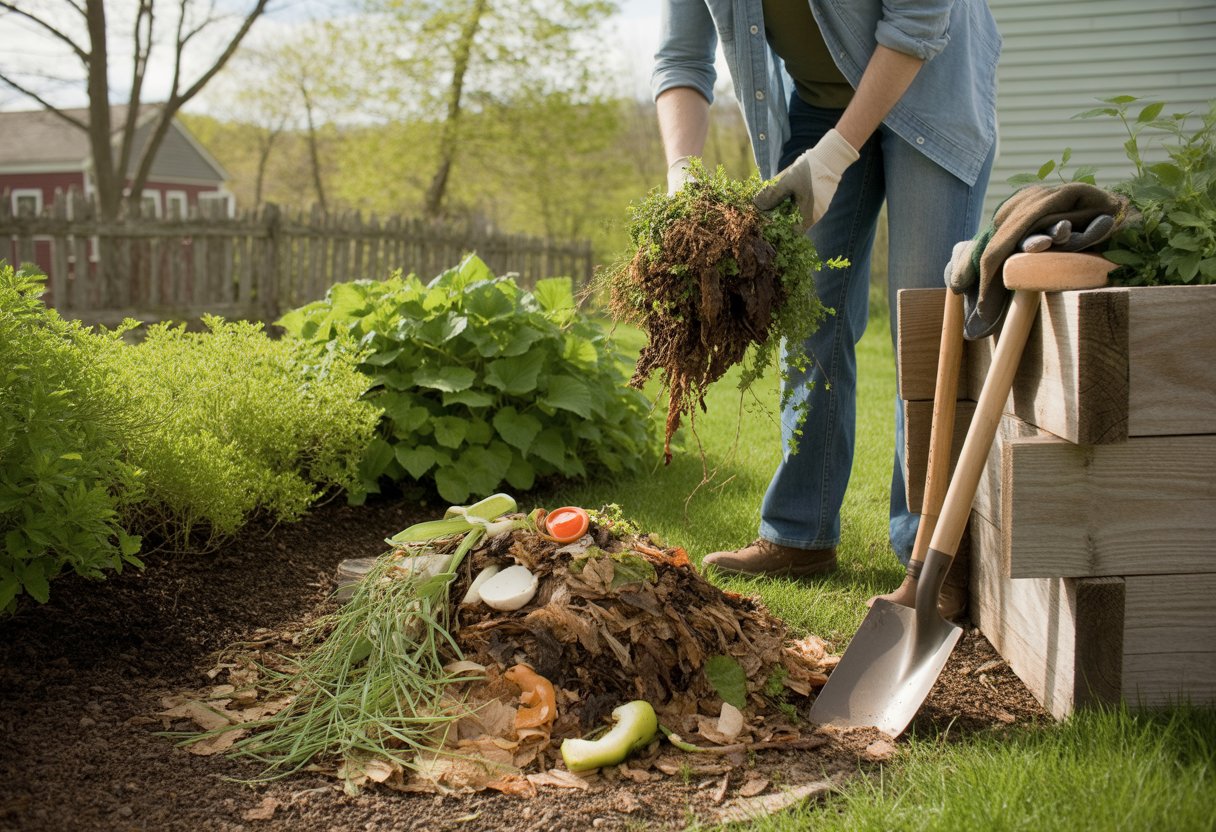
Composting here means paying attention to the weather and picking methods and tools that work with—not against—the local climate. Tapping into the state extension service or chatting with master gardeners? That’s smart, and it really helps the process run smoother.
Understanding Composting Methods
Composting breaks down your scraps into a soil amendment that plants love. There are two basic approaches: cold composting and hot composting.
Cold composting is pretty hands-off. You pile up organic waste and mostly let it be. It’s easy, but you’ll wait a year or longer for finished compost.
Hot composting moves faster. You need a good mix of greens (nitrogen-rich stuff) and browns (carbon-rich), plus frequent turning and decent moisture. With some effort, you could have compost ready in just two to three months.
Outdoor temps matter a lot. Hot composting works best in the warmer months here, while cold composting is fine for when the snow piles up.
Choosing the Right Composter
The composter’s size and style can make things easier—or harder. If you’re short on space, tumblers are a tidy, enclosed option that speed things up and keep out critters.
Bin composters are more stationary and can handle bigger loads. They let air in, but you’ll need to put in some elbow grease to turn the pile.
Open piles might work if you’ve got plenty of space and don’t mind things looking a bit messy. They can attract pests and usually break down slower. Whatever you pick, look for composters recommended by the extension service or local experts.
Essential Tools and Supplies
You don’t need a ton of gear, but a few basics help. A pitchfork or compost aerator makes mixing the pile easier and keeps odors down.
A moisture meter takes the guesswork out of watering—shoot for that wrung-out sponge feel.
A thermometer is useful if you’re hot composting; aim for 130°F to 160°F for best results.
Gloves and sturdy containers for kitchen scraps help keep things tidy. Toss in organic matter like shredded leaves, veggie peels, and coffee grounds to keep nutrients balanced.
Optimizing Compost Ingredients and Balance
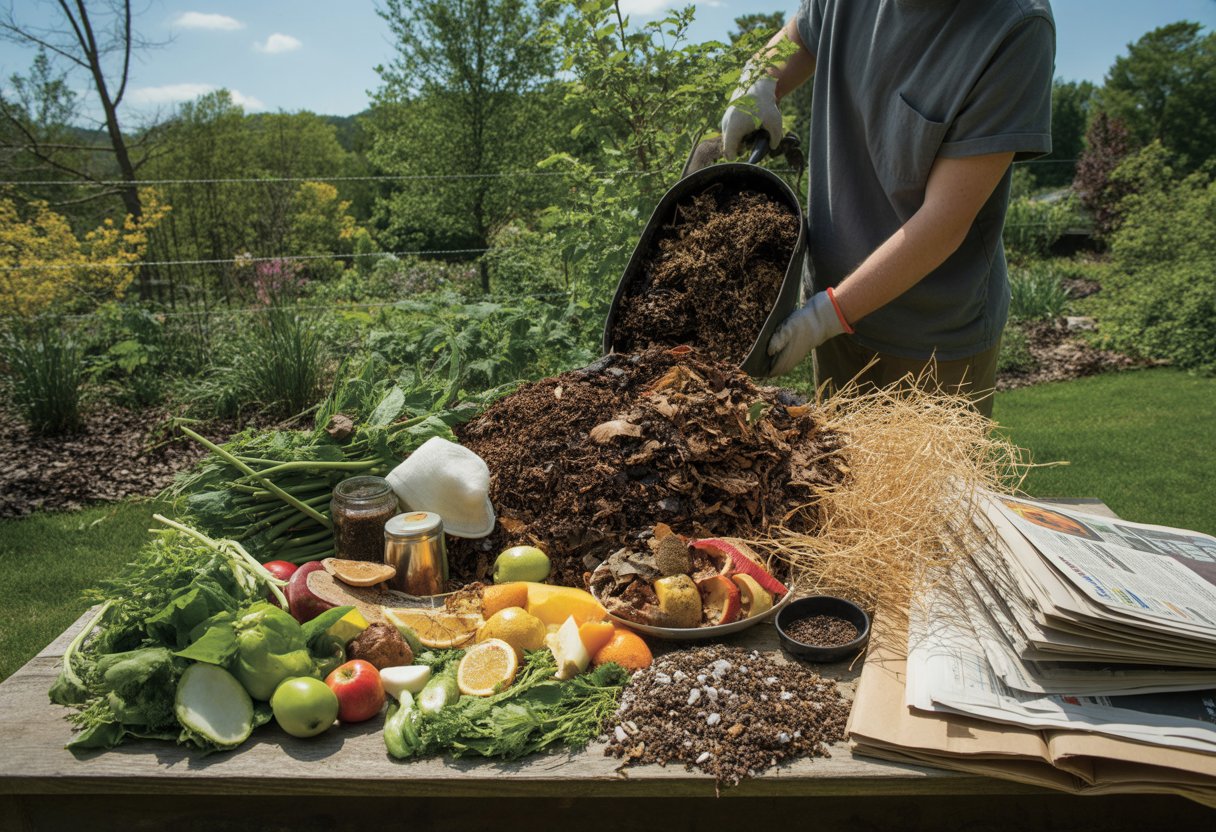
A healthy compost pile needs the right mix of materials and a little help from microbes. Keeping carbon and nitrogen in check speeds things up, and tossing in a bit of manure or other organic matter can boost microbial activity.
Green and Brown Materials Selection
Greens bring nitrogen—think kitchen scraps, fresh grass clippings, and green leaves. Browns offer carbon: dried leaves, straw, wood chips, and paper. Aim for a carbon-to-nitrogen ratio near 30:1 to avoid stinky, slow piles.
Too many greens? Things get soggy and smelly. Too many browns? Decomposition crawls. Layer your materials and chop up bigger stuff to help things along. Skip diseased plants and treated wood—it’s just not worth the risk.
Managing Nitrogen, Carbon, and Other Nutrients
Nitrogen helps microbes thrive. Manure’s a solid source, and it brings extras like potassium and calcium. Go overboard, and you’ll smell ammonia. Too little, and the pile just sits there.
Carbon gives microbes energy and helps keep things from getting too wet. Keep an eye on moisture; you want the pile damp but not dripping. Testing nutrients isn’t a must, but it can help if you’re growing picky plants.
The Role of Manure, Fungi, and Microorganisms
Manure kicks decomposition into gear by adding microbes and nutrients. Just make sure it’s aged to avoid spreading pathogens or weeds. Fungi break down tough stuff like wood chips and stalks.
Bacteria, fungi, and actinomycetes turn scraps into humus. Turn the pile to keep air flowing—anaerobic bacteria stink and slow things down. Healthy microbial action makes for better compost, plain and simple.
Practical Composting Tips for New Hampshire Gardens
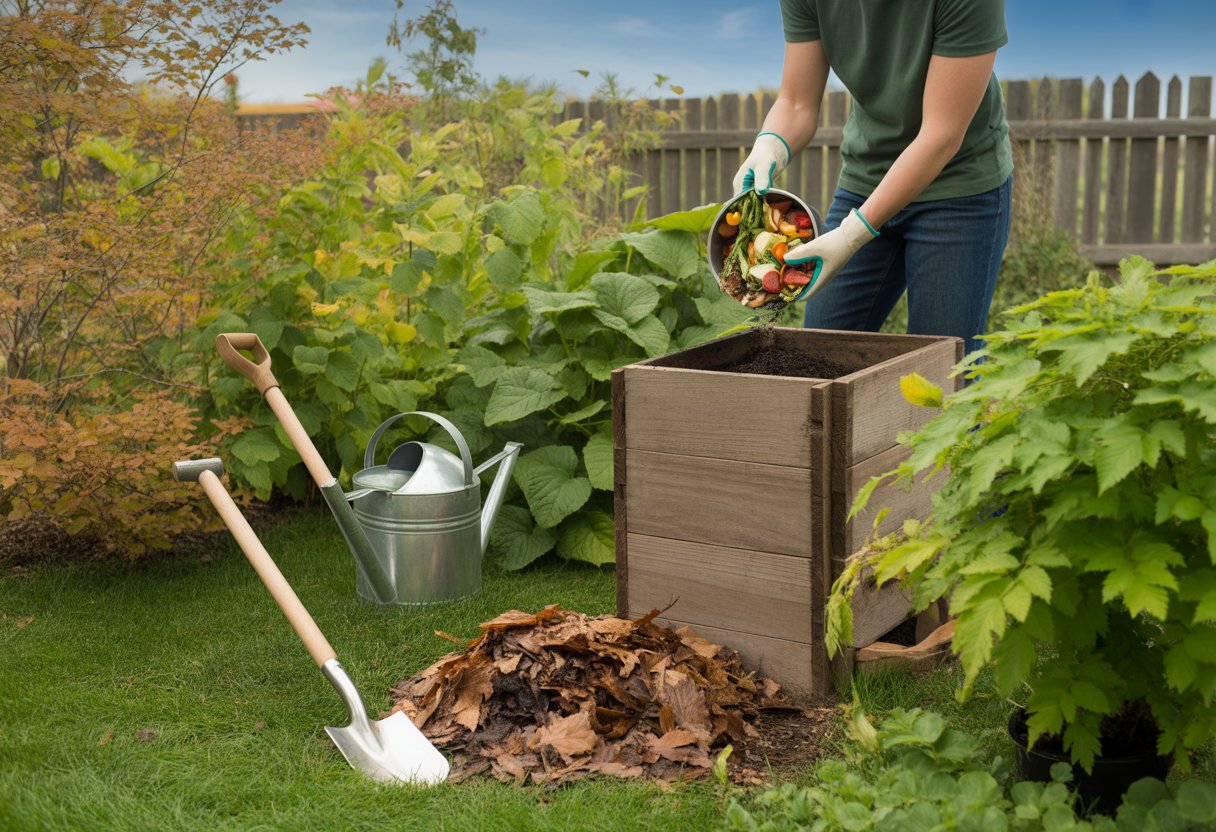
Composting here means keeping an eye on the seasons, dealing with whatever problems pop up, and knowing how to handle finished compost. Good compost boosts soil for annuals, veggies, and seedlings, and it’s a handy mulch for winter protection.
Composting Through the New Hampshire Seasons
Winter slows composting down, but it doesn’t totally stop. Keep adding dry leaves, straw, and other browns to keep things balanced. Insulate the pile with mulch or burlap to trap some heat and moisture.
Spring’s the time to start turning the pile—fresh air speeds things up. Add greens like veggie scraps and grass clippings for a nitrogen kick. In summer, heat helps things break down fast, so turn the pile regularly to avoid bad smells.
In fall, pile on fallen leaves and garden debris. Keep layering browns and greens to keep things active before winter hits. Covering the pile helps it hold onto moisture during the cold months.
Troubleshooting Common Composting Challenges
If your pile’s taking forever, you probably need to adjust the carbon-nitrogen mix. Too many dry leaves? Add more veggie scraps or coffee grounds. If things get soggy and smelly, turn the pile and mix in dry mulch.
Rodents show up if you toss in meat or dairy—just don’t do it. If flies are a problem, bury fresh greens under a layer of browns.
Temperature swings can stall the process. Try insulating the pile with straw or moving it to a sunnier spot.
Storing and Curing Finished Compost
When compost turns dark, crumbly, and smells earthy, let it cure for a few weeks. Curing settles nutrients and makes it safe for seedlings or veggies.
Store cured compost in a dry, shady spot. Use containers that breathe, or cover piles with mulch to keep them moist but not soggy.
Spread finished compost as a top dressing or mix it into soil before planting. It’s also great as mulch to hold moisture and keep weeds down.
Applying Compost to Your Garden Successfully
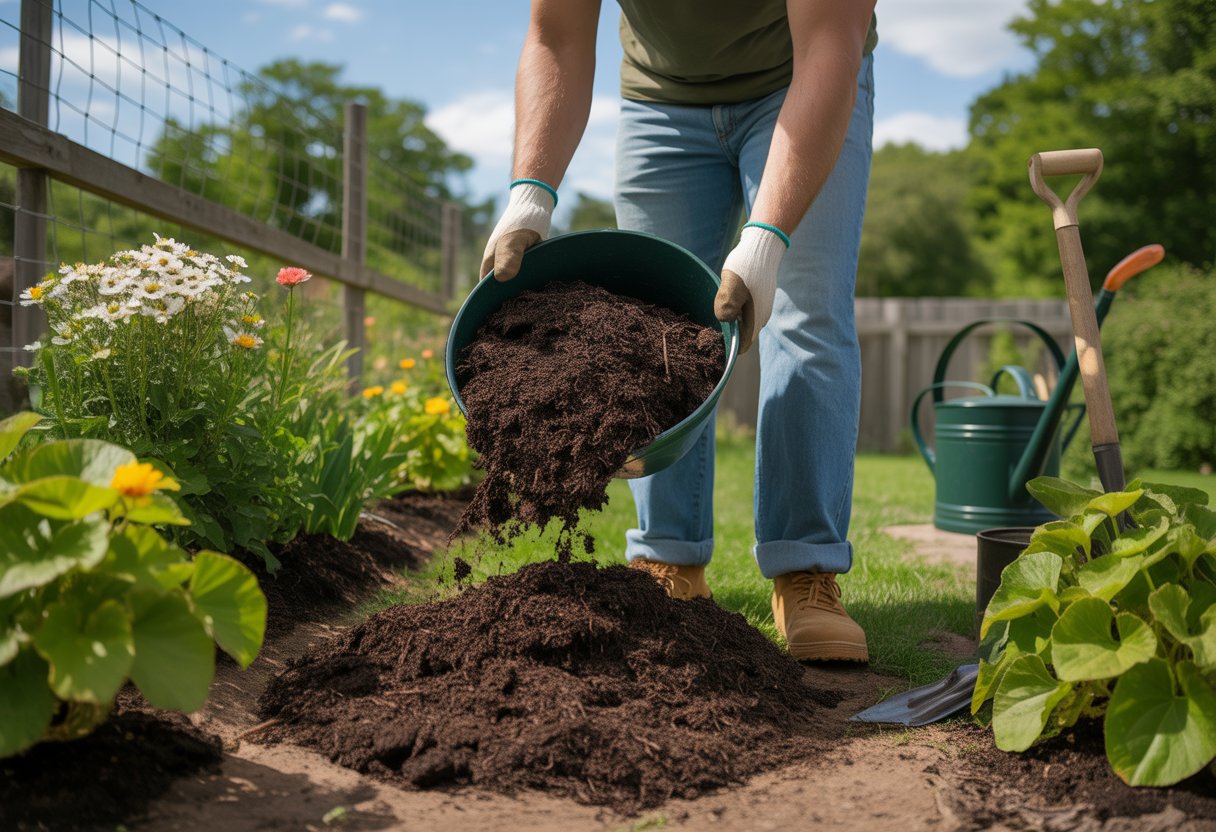
Compost is a game-changer for soil structure, moisture, and nutrients. Timing, how much you use, and where you put it all matter if you want the best results.
Best Practices for Vegetable Gardens
For veggies, spread compost in early spring before planting or in fall after harvest. A 1- to 2-inch layer across the soil gives plants a good boost without burning them.
Work compost into the top 6–8 inches of soil so roots can reach the nutrients. Don’t go too thick—too much can cause soggy spots or attract pests.
Pick compost that’s fully broken down and free of weed seeds. Local garden centers or the extension service can help you find the good stuff. If you’re unsure about application rates, a master gardener or soil test can help.
Mulching and Soil Amendment Tips
Compost makes a solid mulch when you spread a 2- to 3-inch layer around plants—but keep it away from stems to avoid rot. It keeps weeds down, holds moisture, and slowly feeds your plants.
Mixing compost into native soil boosts aeration and gets beneficial microbes working. If you’ve got clay soil, compost helps break it up. Sandy soil? Compost helps it hold water.
Some botanical gardens mix compost with shredded leaves for mulching. That combo balances nutrients and keeps the soil temperature steadier. Replenish your mulch every season to keep your soil in top shape.
Leveraging State Extension and Local Resources
New Hampshire’s state extension service offers soil testing and composting workshops tailored to local conditions. Gardeners can figure out how much to use based on nutrient needs and soil pH.
Master gardener programs hand out free or low-cost advice about compost selection and application. Local garden centers usually stock compost that fits New Hampshire’s climate, and they often share tips that actually make sense for the area.
If you visit a botanical garden or drop by a community program, you’ll see real-life composting in action. Honestly, there’s nothing like seeing it up close to connect the dots between theory and what actually works in your own yard.

